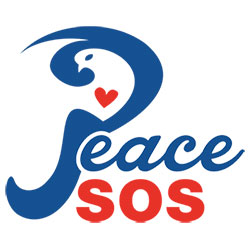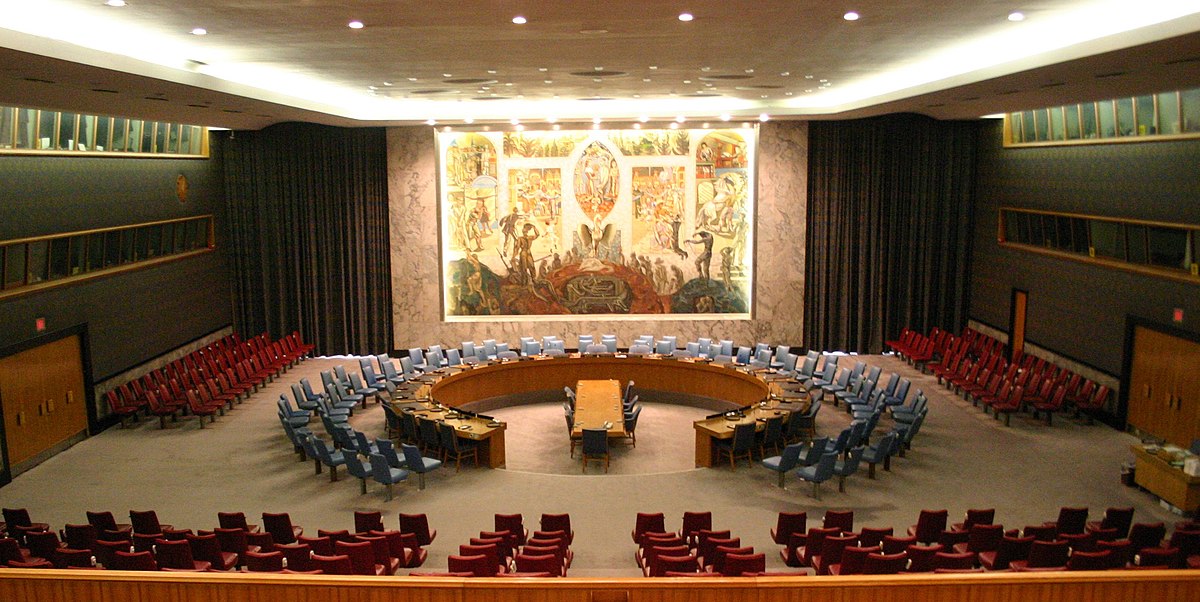Most of us are familiar with the film about Robert Oppenheimer that tells how, in 1945, work was being done in the deepest secrecy to develop the atomic bomb, a weapon system that would profoundly change issues of war and peace.
What many of us do not know is that world peace was also being worked on during the same period. France, Britain, the United States, Russia and China met at Dumbarton Oaks, an estate near Washington D.C..
They assumed that they would win that terrible Second World War and sought an approach whereby such wars would never happen again.
In deepest secrecy, even here, they drafted a revolutionary document: the Charter of the United Nations, adopted by 54 countries at the San Francisco conference on 26 June 1945 – two months before the first atomic bomb fell.
This Charter agreed to eliminate war once and for all. Besides a lot of beautiful but abstract goals, this Charter was also astonishingly concrete.
Art 33 relating to the peaceful settlement of disputes reads as follows:
- The parties to any dispute, the continuance of which is likely to endanger the maintenance of international peace and security, shall, first of all, seek a solution by negotiation, enquiry, mediation, conciliation, arbitration, judicial settlement, resort to regional agencies or arrangements, or other peaceful means of their own choice.
- The Security Council shall, when it deems necessary, call upon the parties to settle their dispute by such means.
Only six months ago, I read this passage for the first time and was stunned. No longer blunt power politics and the right of the strongest was paramount but peaceful conflict resolution. For me, that was the good news.
The bad news I already knew; namely, that the Charter, including Article 33, had never worked well in practice. From 1945, in a slow and gradual process, the Charter was undermined by the major powers.
Unfortunately, I have to note that the United States, as the largest hegemonic power, played a major role in this. It would go too far to explain this at length here. I will only give a few examples. The United States hardly ever signs international treaties established by the United Nations. Nor have they accepted the international criminal court. They want to keep their hands free to do their own thing and make their own deliberations completely unhindered. Thus, many military interventions or the aiding of various forms of regime change are known, all of which failed the test of the UN Charter.
We are now eighty years on, counting from 1945. The question arises as to how to proceed with the United Nations. Let me mention a few points.
- As a foundation, the UN is an organisation that the world community should cherish dearly. In all respects, the UN is an ‘unfinished masterpiece’ (Joris Larik) or a ‘breakthrough in civilisation’ (Jan Pronk).
- If the world community wants to revert to new relations in which peace is paramount, as was originally intended in 1945, instead of today’s ‘von Clausewitz reality’ in which increasing or maintaining one’s own power is the decisive criterion, this can only be done through the UN and the UN Charter. The revival of the UN and the application of the UN Charter is necessary.
In fact, it is a last straw to cling to. I wouldn’t know how else to get back on the 1945 path, instead of sinking further and further into high-risk confrontations, war and misery.
- There is not much wrong with the Charter in itself. The theory is in order, only in practice nobody sticks to it. The will of governments to initiate real change is the crucial prerequisite. Unfortunately, that intention is almost non-existent at present.
We are moving towards a world where the major power blocs are on a collision course with each other. And each bloc thinks it is the other’s fault that things are going the way they are.
This is the ideal context for ever-increasing escalation.
- My main conclusion, therefore, is that a bottom-up movement is needed to get governments to adhere to the UN Charter again, the ‘constitution’ we agreed to in 1945. Left to themselves, I do not see them doing so, given the bellicose language that at least the major powers use against each other. Humanity is hard at work getting into the completely wrong film. The movie of war, escalation and ultimately a real possibility of a nuclear winter.
- And yet, the ingredients to avoid this are in fact simple. By using the techniques in Article 31 of the Charter. And by additionally using simple rules of conduct; such as
– listening to each other and trying to understand each other
– not applying double standards and trying to think beyond one’s own rightness.
– with the central guideline being the ‘golden rule’, which has been at the top of all philosophical currents and world religions for thousands of years: What will not be done unto thee, do not do unto another. In short, that which is also the basis of the UN Charter.
———
Author guest blog: Dolph Kessler, written Monday 25 November 2024
Dolph Kessler is the author of the Dutch-language book ‘Oorlog of vrede, willen winnen of gelijkspel: op vrede gerichte preventieve dialoog, de derde weg tussen pacifisme en van Clausewitz’. You can find his website here.
Photo: The United Nations Security Council Chamber in New York, also known as the Norwegian Room, originally posted to Flickr as UN Security Council. Retrieved from: Wikimedia.

